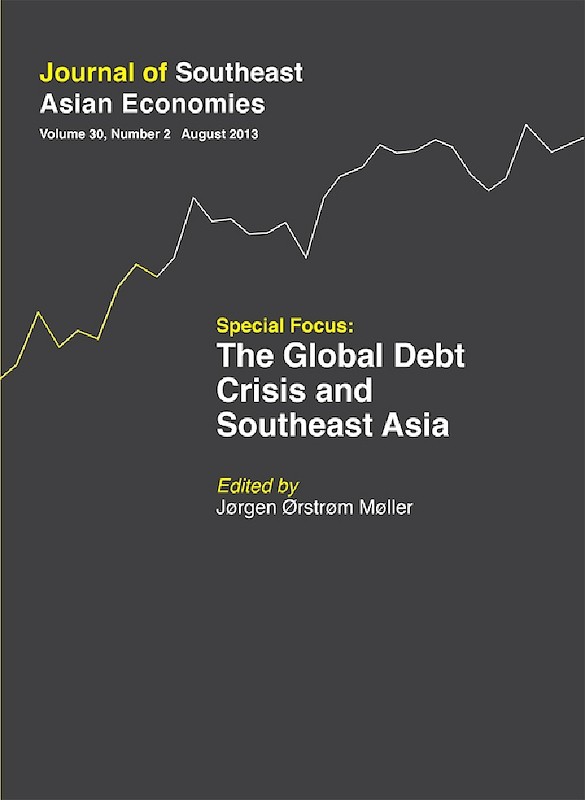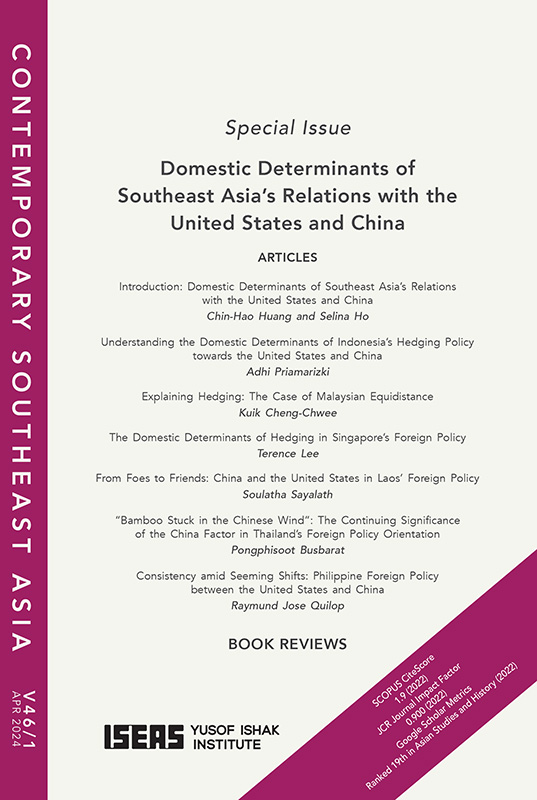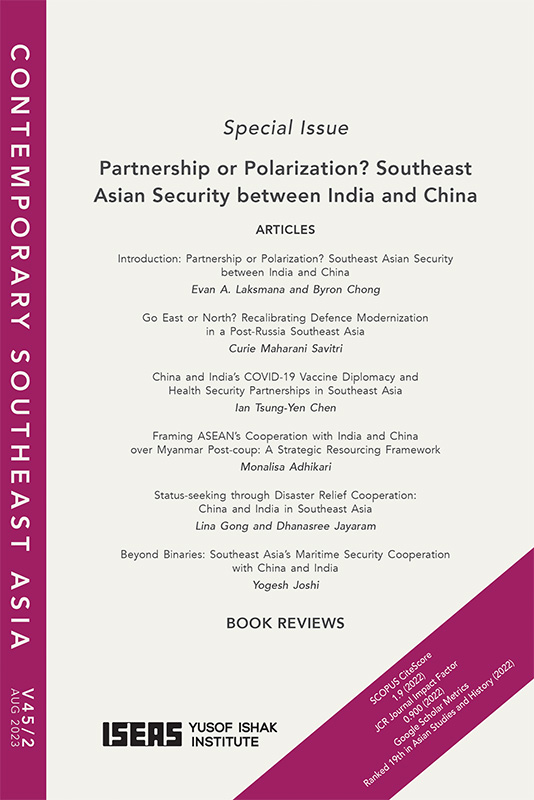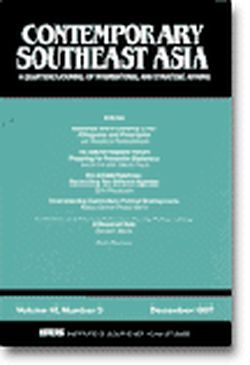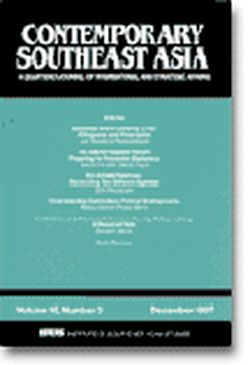Contemporary Southeast Asia Vol. 35/3 (Dec 2013)
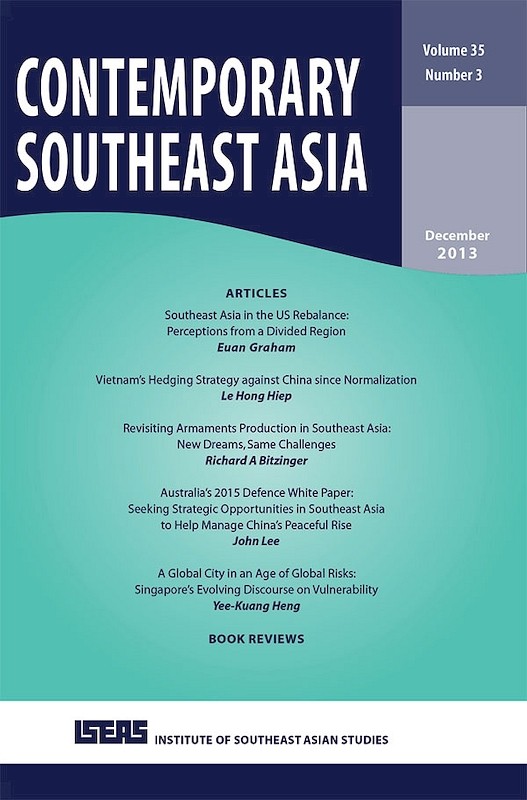
Date of publication:
December 2013
Publisher:
Institute of Southeast Asian Studies
Number of pages:
164
Code:
CS35/3
Contents
-
Contemporary Southeast Asia Vol. 35/3 (Dec 2013)
[Whole Publication] -
Preliminary pages
- ARTICLES
-
Southeast Asia in the US Rebalance: Perceptions from a Divided Region, by Euan Graham, author see abstractThis article explores perceptions and reactions across Southeast Asia towards the Obama administration’s “pivot” or “rebalance” to Asia. The US approach has been dismissed as more rhetorical than substantive grand strategy, its credibility under renewed scrutiny following President Obama’s cancelled visit to Southeast Asia in October 2013. Nonetheless, the rebalance has expanded from its origins in 2010–11, acquiring diplomatic and economic “prongs” with a particular focus on Southeast Asia, broadening the bandwidth of US engagement beyond military diplomacy and force realignment. However, the US “pivot” has had to contend with entrenched narratives of the US role in the region oscillating between extremes of neglect or over-militarization. The US-China strategic dynamic weighing over the region, itself central to Washington’s strategic calculus across Asia, has also coloured the lens through which Southeast Asians have viewed the re-balance. Varied reactions to the US rebalance at the national level in Southeast Asia are further suggestive of a sub-regional divide between “continental” and “maritime” states that to some extent predisposes their perspectives and orientation towards the Great Powers.<br>
-
Vietnam's Hedging Strategy against China since Normalization, by Le Hong Hiep, author see abstractSince the normalization of Sino-Vietnamese relations in 1991, Vietnam’s China policy has been shaped by a combination of approaches which can be best described as a multi-tiered, omni-directional hedging strategy. The article argues that hedging is the most rational and viable option for Vietnam to manage its relations with China given its historical experiences, domestic and bilateral conditions, as well as changes in Vietnam’s external relations and the international strategic environment. The article examines the four major components of this strategy, namely economic pragmatism, direct engagement, hard balancing and soft balancing. The article goes on to assess the significance of each component and details how Vietnam has pursued its hedging strategy towards China since normalization.
-
Revisiting Armaments Production in Southeast Asia: New Dreams, Same Challenges, by Richard A Bitzinger, author see abstractSeveral states in Southeast Asia have long attempted to produce their own armaments, both to support national security and to aid in national economic and technological advancement. In most cases, however, such efforts have been decidedly disappointing, and few local arms industries have been economically or technologically self-sustaining. Nevertheless, we may be witnessing a new phase of renewed interest among several Southeast Asian nations in expanding their capabilities for indigenous arms manufacturing, as evidenced in particular by new defence-industrial initiatives in Indonesia and Malaysia. These efforts have been supported by a long-term growth in defence expenditures and new efforts to utilize industrial offsets (such as technology transfers and localized production) as a part of arms acquisitions to build up local arms industries. It is unlikely, however, that these efforts alone will suffice to create economically viable local defence industries. Consequently, countries in the region will still have to make tough decisions about the future course of their defence industrial bases. Most likely, they will have to either invest considerably greater resources into developing their defence sectors (which may beyond their capacities and which are still no guarantee of success) or else they have to scale back their ambitions and choose to concentrate in niche areas where they have a better chance of being competitive in the global arms marketplace.
-
Australia's 2015 Defence White Paper: Seeking Strategic Opportunities in Southeast Asia to Help Manage China's Peaceful Rise, by John Lee, author see abstractAustralia’s new government is committed to delivering the next defence white paper in 2015. The two previous white papers took a predominantly risk-management approach to Southeast Asia, generally ignored the strategic opportunities in the region, treated it as a stand-alone region largely unrelated to developments in East Asia and failed to link Australia’s policies in Southeast Asia with the broader goal of helping to ensure greater strategic stability in Asia by putting constraints on Chinese assertiveness and encouraging its peaceful rise. After offering a summary of recent Australian defence thinking on Southeast Asia, this paper outlines why managing China is the key variable when it comes to strategic stability in the region. It then examines how China’s strategy and behaviour can be shaped and influenced by events and relationships in Southeast Asia, and offers some suggestions as to the role Australia can seek to play in Southeast Asia that relates to Canberra’s China-focused objectives and strategic stability in Asia more broadly. If that can be achieved in the 2015 defence white paper, Australia — which is often criticized for being preoccupied primarily with managing the relationship with its superpower ally the United States — will demonstrate to itself and Asia that its heavy reliance on the ANZUS treaty is no barrier to strategic creativity in Asia.<br>
-
A Global City in an Age of Global Risks: Singapore's Evolving Discourse on Vulnerability, by Yee-Kuang Heng, author see abstractSingapore’s post-independence leaders perceived the country’s vulnerability in terms of its miniscule size, lack of resources and hinterland, fragile ethnic harmony and geo-strategic location surrounded by larger, and potentially hostile, neighbours. Given such odds, Singapore sought to become a global city by tapping into international flows of goods and trade. Becoming a core node in the global economy also enhanced Singapore’s strategic relevance, upping major powers’ interest in its survival. However, due to its global connectivity Singapore’s exposure to rapidly spreading global risks, such as pandemics and financial crises, has become increasingly noticeable. This paper seeks to uncover a paradox in Singapore’s ambition to become a global city as new vulnerabilities emerge from its highly globalized status. Through a discourse analysis of policy-makers’ statements and speeches, it reveals that a recurrent theme of perceived vulnerability today relates to the extensive global maritime, aviation and financial flows on which Singapore’s continued prosperity depends. The paper concludes that the critical infrastructure that underpin its global connectivity — its airport, maritime port hub and financial centre — can also unwittingly circulate and import global risks such as pandemics, Weapons of Mass Destruction proliferation, financial contagion and terrorist financing, adding a new dimension to how its leaders perceive vulnerability. <br>
- BOOK REVIEWS
-
BOOK REVIEW: Southeast Asia and the English School of International Relations: A Region-Theory Dialogue. By Linda Quayle, by See Seng Tan, author
-
BOOK REVIEW: Integrating Regions: Asia in Comparative Context. Edited by Miles Kahler and Andrew McIntyre, by Mark Beeson, author
-
BOOK REVIEW: Return of the Dragon: Rising China and Regional Security. By Denny Roy, by Lonnie D Henley, author
-
BOOK REVIEW: Four Decades On: Vietnam, the United States, and the Legacies of the Second Indochina War. Edited by Scott Laderman and Edwin A. Martini, by David Brown, author
-
BOOK REVIEW: Japan's Security Identity: From a Peace State to an International State. By Bhubhindar Singh, by H D P Envall, author

